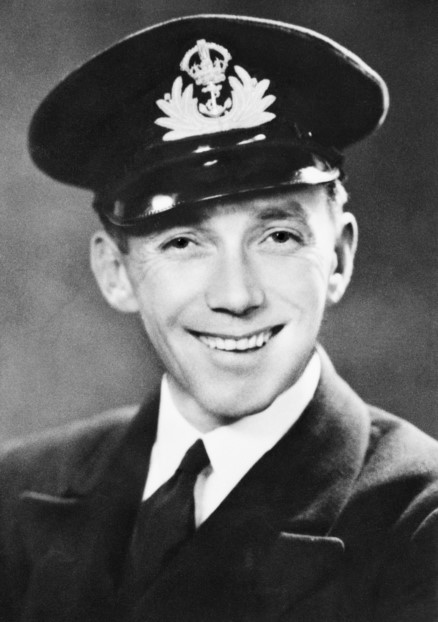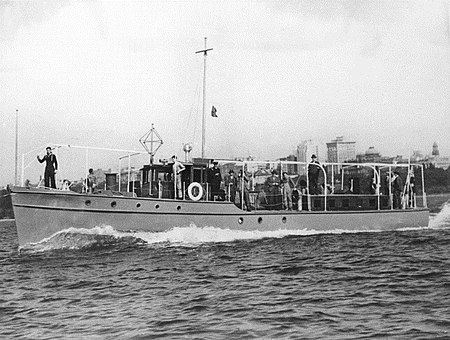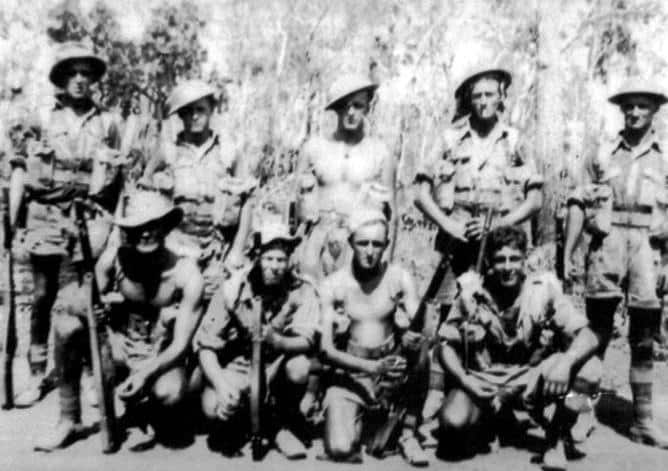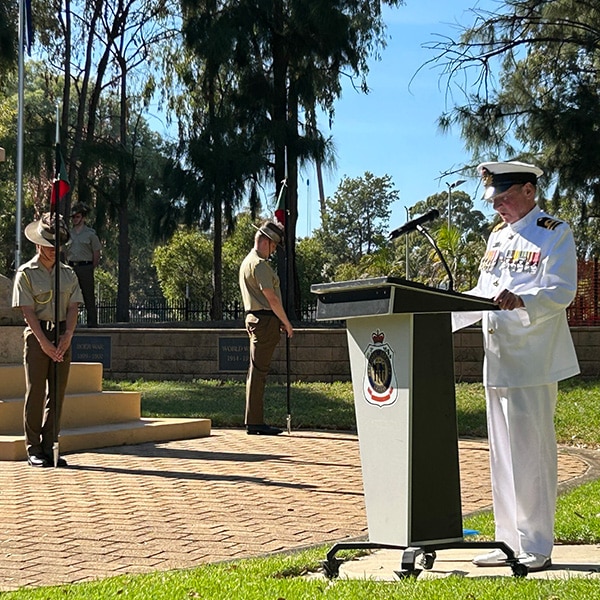
Leon Verdi Goldsworthy was born on January 19, 1909 in Broken Hill to Alfred Goldsworthy and Eva Jane Goldsworthy (née Riggs). While growing up he was a keen amateur wrestler and gymnast. He was educated at Kapunda High School in country South Australia, and later went on to the Adelaide School of Mines before attending Adelaide University, where he worked as a technician in the Physics Department. In the years before the Second World War Goldsworthy was engaged in an electrical sign business in Western Australia. On 4 November 1939, he married Maud E Rutherford and they later had a daughter Pamela.
Following the outbreak of the Second World War, Goldsworthy applied to the join the Royal Australian Navy but was initially rejected due to his small stature. This did not deter him from making a second attempt and he was subsequently accepted as a probationary Sub Lieutenant in the Royal Australian Naval Volunteer Reserve (RANVR) on 24 March 1941.
Shortly afterwards he was sent to England to undertake officer training.
In England, Goldsworthy volunteered to become a rendering mines safe (RMS) officer and in August 1941 he joined the Admiralty Mine Disposal Section based in London. This became known as the Land Incident Section which dealt with German mines dropped as bombs from the air. During that appointment he rendered safe 19 mines and also qualified as a diver. As the German blitz on English cities began to decline, he transferred to the Enemy Mining Section, situated at HMS Vernon in Portsmouth, in January 1943. By then he had proven himself a skilled officer who had put his pre-war training in electricity and physics to good use.
In early 1943 he helped Lieutenant Commander John Mould, RANVR, a fellow RMS officer, to develop a diving suit with an independent gas supply that would be suitable for mine disposal work. Mould went on to form and train Port Clearance Parties or ‘P’ Parties as they were known, to clear liberated harbors in Europe. Goldsworthy volunteered to assist but was retained in HMS Vernon for further underwater mine disposal duties. There he worked closely with Vernon’s mine recovery flotilla, a group of auxiliary vessels fitted for mine location and recovery work.
On 13 August 1943 Goldsworthy defused a German mine in waters off Sheerness. This was only the second time such a mine had been rendered safe underwater and was a particularly hazardous operation. In September and October 1943, he defused two mines, one of which had rested under a Southampton wharf for two years and the other in the river Thames. For this he was awarded the George Medal. Then, in April 1944, he disarmed an acoustic mine that had lain in the water off Milford Haven for two and a half years. In September 1944 he was awarded a George Cross for his work in recovering and defusing three magnetic and one acoustic ground mine between June 1943 and April 1944.
This award was the equivalent of the Victoria Cross and was awarded to recognise acts of bravery performed not in the face of the enemy.
Overall, during this period he rendered safe or recovered seven ground mines and a number of moored mines and armed conical floats.
Shortly after the Allied invasion of France, Goldsworthy, based in HMS Esmeralda from the Mine Recovery Flotilla, joined the P Parties to undertake mine disposal, underwater demolition and other diving tasks off the Normandy coast. There Goldsworthy rendered safe the first type K mine in Cherbourg Harbor and three ground mines on the British assault area beaches. For this work he was awarded a Distinguished Service Cross in January 1945 “for gallantry and distinguished services in the work of mine-clearance in the face of the enemy”. As the P Parties followed the advance into Europe, Goldsworthy remained with the Flotilla, where he dealt with four ground mines in the waters around the English coast.
Goldsworthy and another Australian officer, GJ Cliff, RANVR, were both promoted Acting Lieutenant Commanders in September 1944.
In October 1944, the Admiralty sent them to the Pacific as British Naval Liaison and Intelligence Officers. There they were attached to the US Navy’s Mobile Explosive Investigation Unit No 1, initially in the South West Pacific and subsequently in the Philippines. Their task was to obtain intelligence on US search, recovery and disposal techniques and to forward samples of enemy ordnance material, particularly mines and torpedoes to the UK. Goldsworthy returned to the UK in August 1945 to close down the P Parties and in December he was appointed to the British Naval Technical Mission to Japan where he assisted in compiling a report on Japanese underwater weapons.
He returned to Australia in HMS Formidable in April 1946 and was demobilised in May.
By the time the war ended, Goldsworthy had become Australia’s most highly decorated naval officer, having been awarded the George Cross, the George Medal the Distinguished Service Cross and a mention in dispatches.

After demobilisation, Goldsworthy returned to Perth where he worked as the production manager of the Rainbow Neon Light Company until retiring in 1974.
He was recommissioned as an officer in the RANVR in 1953 so that he could take part in the coronation celebrations for Queen Elizabeth II, embarking with others in the aircraft carrier HMAS Sydney which conveyed the coronation contingent to the UK.
After his wife’s death in 1959, he married Georgette Johnston in 1968. In 1991 he became vice-chairman (overseas) of the Victoria Cross and George Cross Association and was also the patron of the Perth Underwater Explorers Club.
Leon Goldsworthy died in Perth, Western Australia on 7 August 1994. He was cremated and his ashes scattered at sea. The Leon Goldsworthy Ward at Hollywood Private Hospital in Perth was named in his honour.



